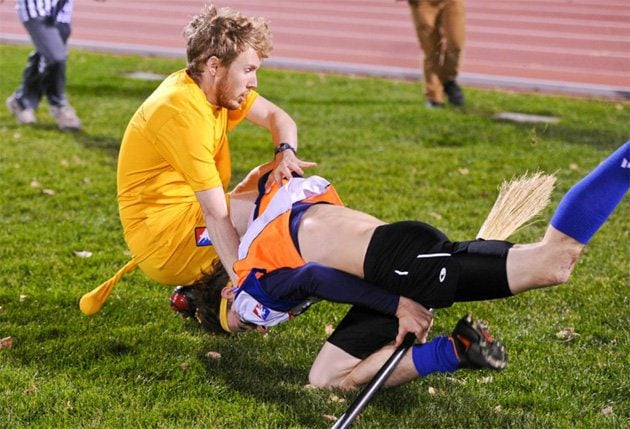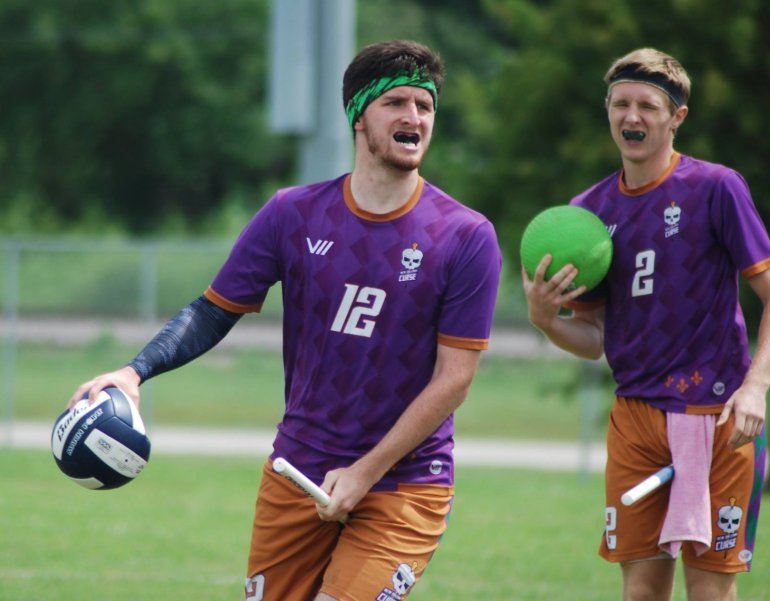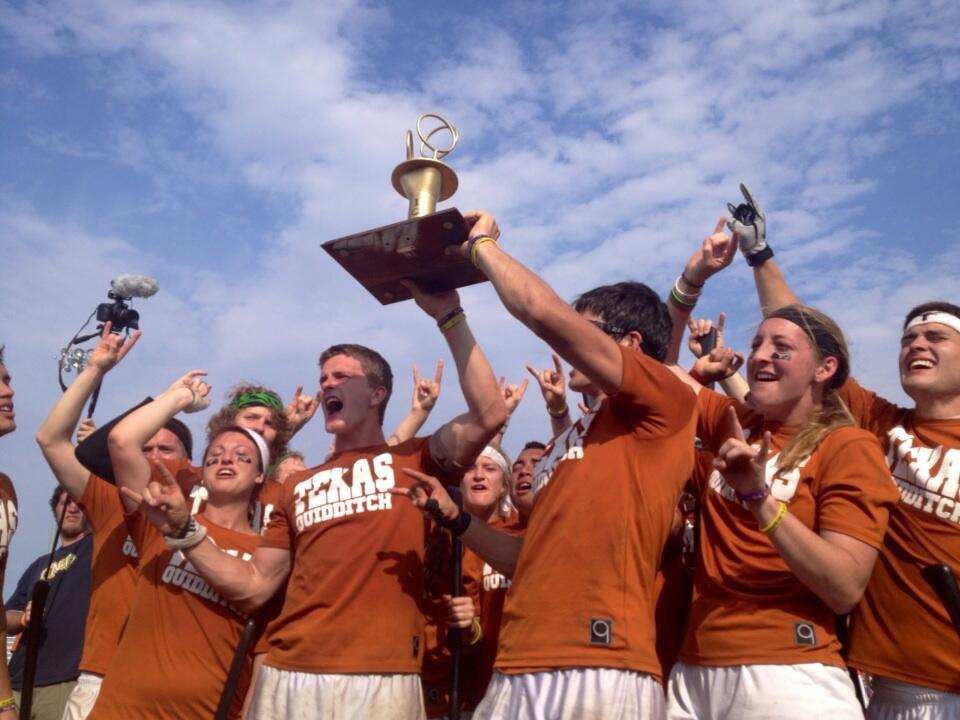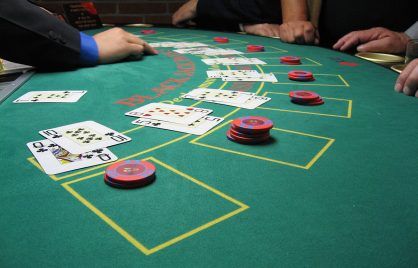Most Obscure Sports: Quidditch
Chances are you’ve seen a news clip or video of college-age kids running around on brooms, playing what resembles Harry Potter‘s flying broom sport, quidditch.
But what started as a way for bored freshmen to pass the time at Middlebury College in 2005 has spread and transmogrified into something much more global. It’s now an internationally governed game, complete with its own regional tournaments and world championships.
How It’s Played
Muggle quidditch, as it’s sometimes called, is extremely similar to its literary and film counterparts (minus the flying part).
The real-world adaptation involves two teams of seven on a rectangular 60 x 36 yard field that has three hoops standing at each end. In play are two types of balls, a volleyball called a quaffle and three dodgeballs called bludgers.
Teams are made up of four positions that share the same name and role as the series:
Keeper (1): protects the hoops (like a goalie) and can also play as a fourth chaser if they leave the designated keeper area.
Chasers (3): attempts to pass the quaffle through the opponent’s hoops (10 points per make).
Beaters (2): throws bludgers at the other team’s chasers in order to temporarily take them out of the game. Can also protect their own players from thrown bludgers.
Seeker (1): In charge of trying to catch the snitch. They do not enter the game until 18 minutes has passed.

The snitch itself is a tennis ball inside a sock attached to the shorts of a referee called the snitch runner.
This runner can do virtually anything in their power to protect the snitch from being taken, including physical contact. Capturing the snitch ends the game immediately and awards the captor’s team with 30 points.
If the snitch is not caught after a certain amount of game time has passed, the runner is sometimes confined to smaller and smaller parts of the playing area.
The Rules and Being the Best

Quidditch is (extra) unique in that it’s a co-ed sport: most leagues and competitions follow a ‘four-maximum’ rule, meaning a team can have no more than four players on the field at the same time that identify as the same gender.
From there the nuances run deep, and the rules continue to evolve (US Quidditch’s rulebook is already in its 11th edition).
Recent revisions have placed greater restrictions on tackling, moving screens, time wasting, and how the snitch runner can interact with the seekers.
And of course where there’s governance, there’s disputes. Like in any traditional sport, organized quidditch has had its share of controversy already, from a concussion epidemic to teams trying to field seven players all of the same gender.
Those that hope to play the sport at a high level need to have a little more than just a working knowledge of the rules and an enthusiasm for the sport. The best players all have great general fitness, awareness, and coordination, too.
The team and strategy aspects of the game are worked on at practices like at any other sport, and US Quidditch has even written up a few position-specific circuit training plans aimed to make sure players don’t burn out before the snitch even gets on the pitch.
Some teams even have their own strength and conditioning coach, too.
A Global Game
Quidditch remains popular where it began, on American college campuses. While the number of active teams there has somewhat dwindled after an initial boom, US Quidditch still lists over 100 schools with programs on their site.
Around the world, the sport still boasts over 500 teams in 26 countries.

Quidditch’s first premier competition was the US Quidditch Cup (formerly called the Quidditch World Cup), which had its 10th anniversary in 2017. This tournament is contested by over 60 qualifying collegiate and community teams each spring.
Newer but no less prestigious is the IQA World Cup, contested every two years by squads representing 20+ nations.
Similarly, the European Games (national teams), European Quidditch Cup (club teams), and Asian Quidditch Cup (clubs) are held annually or biannually to find their continent’s best team.

There have also been movements to establish semi-professional quidditch leagues. The two front runners at the moment are Major League Quidditch in the U.S. and Canada and the Quidditch Premier League in the UK.
While none of these leagues or major tournaments have struck a TV deal just yet, many can still be streamed live or watched later on YouTube or Facebook, or even attended live.
Based on the sport’s rapid growth already, it wouldn’t take an act of magic for the game’s World Cup 2018 to land a deal that would put it in front of its largest audience yet.


